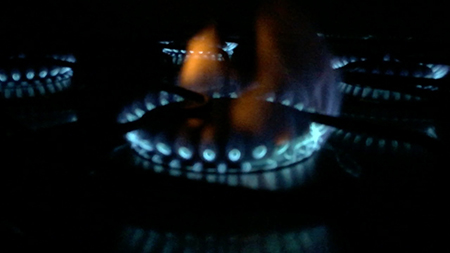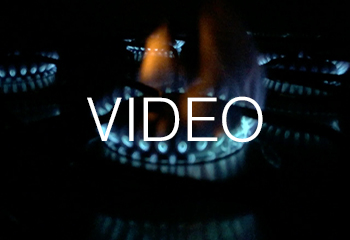1. Memória do Fogo [Memory of Fire] (16’02’’)

Kitchen and Music has elements that is alchemical in their processes. From ordinary to extraordinary the staple food turns the plate of food, and the sound and their units, turns into music.

In Marco Scarassatti’s "Memory of the fire", an alchemical operation takes place during the transformation of the elements. It’s all about the sounds memories of the fire and the transformations by fire. Pot’s sounds, pans cooking and many dishes alternates into a musical montage. Memory of the fire catch and remembers those sounds of fire. It?s a possibility to abstract, to set the sounds free and listen to the music that rises trough the pans, like an smoke?
2. Rios enclausurados (Enclosed Rivers)
is a poetic and political construction of a sound space created by editing the sounds of various streams and rivers which have been artificially channelled in the city of Belo Horizonte. This Brazilian city has approximately 150 km of streams and rivers, a hidden population channelled into true underground dungeons visible only through exposed iron grids in the street.
The sonority of this work reveals the existing dungeons in the city. In them, a prisoner is forgotten, the urban project serving to render him invisible and silent. However, when you get close to the grids you soon realize the power and sublimity arising from the idea that, at any time, the river can, with all its strength, break free and decide its own course.
It was my first year in Belo Horizonte and, having been influence by the theory of derive, I was taken, one day, by the a sound coming from underground which I heard while walking down one of the central streets. I approached a fence that was in the street and was surprised by what I saw and heard. After that I started paying attention and realized that the whole city had the same type of grids scattered along the street.
When I started recording the sounds of the river I positioned the recorder between the bars in the grid - I usually did this alone, and some streets were dangerous. Then in 2012, I started recording with Fernando Ancil, a visual artist friend and we created a sound installation along Avenida Afonso Pena, one of the city's major thoroughfares. In this installation we created an aerial river using more than 40 speakers arranged at intervals of 350 meters up and down the avenue. The idea was to create an acoustic overflow so as to enable the city to once again hear the river.
In Rios enclausurados, released in 2015 by Seminal Records, I composed two tracks from edits obtained from several rivers and streams recorded. I think the pieces do not allow for distraction whilst listening. Move the normative sense of the music so as to interrogate, in an interventionist mode, a way of listening to the city. The tracks carry with them a way of doing and a form of sound audibility which has been divorced from everyday living in the city.
3. Sound Postal:
Derives in Praça da Estação(Station Square)
Belo Horizonte - Brazil
The Derives Sonora project has as its main inspiration the Theory of the Derives developed by the Situationist International. The theory proposes a way of living and a method to break with the rationality of dominant space representations practiced by the situationists, who Guy Debord described and problematized in an article published by the Situationist International. There is also a correspondence with the sound walking practices developed by Hildegard Westercamp, with the difference that, the Derives Sonora employs no previously thought out routes.
For these sound dérives I developed listening devices. They are relational objects, assembled mostly in safety helmets. Each device acts as an acoustic filter and incorporates pvc pipes, horns, siphons, dampers and safety cones. The helmet has been given the name the hearing helmet.
These devices alter our listening, not only by the filter, but also because an elongated apparatus is attached to the ear and this serves to promote listening through a solid medium, as well as, enrich our harmonic experience. Because of these changes it seems that all our perceptual apparatus engages in adapting to this device, transforming us into a great ear. Thus, in the sound dérives, the helmet enables us to be fully mobilized to listen.
I proposed to a group of Visual Arts and Music students the practice and I chose a place that would provide a diversity of sounds and routes. The site chosen was the Station Square. First I suggested that each participant put on the Hearing Helmets to hear the sounds of the square so as to be stimulated by the sounds that most called their attention. There were no worries in relation to time. The important thing was to let the students' bodies be driven by the sounds of the city. Whilst following these routes for the first time no recordings were made so as not to become hostages to the listening simulation of the microphone, neither prisoners to the idea that we had to produce something.
I wanted them to live this experience before recording. When they returned from their dérives, I set a meeting so as to discuss which routes each had followed. I proposed that we repeat these again, recording the previously followed itinerary. It was as if the 1st listening experience had left an ephemeral trail of sounds which would provide the trajectory for the recordings made during the 2nd walk. I edited this material into a sound postcard. It was not just a static soundscape, but the junction of the movements and listenings of the moving bodies involved. It has therefore become a complex postcard, with various modes of listening, and several paths followed in the same square.
|

